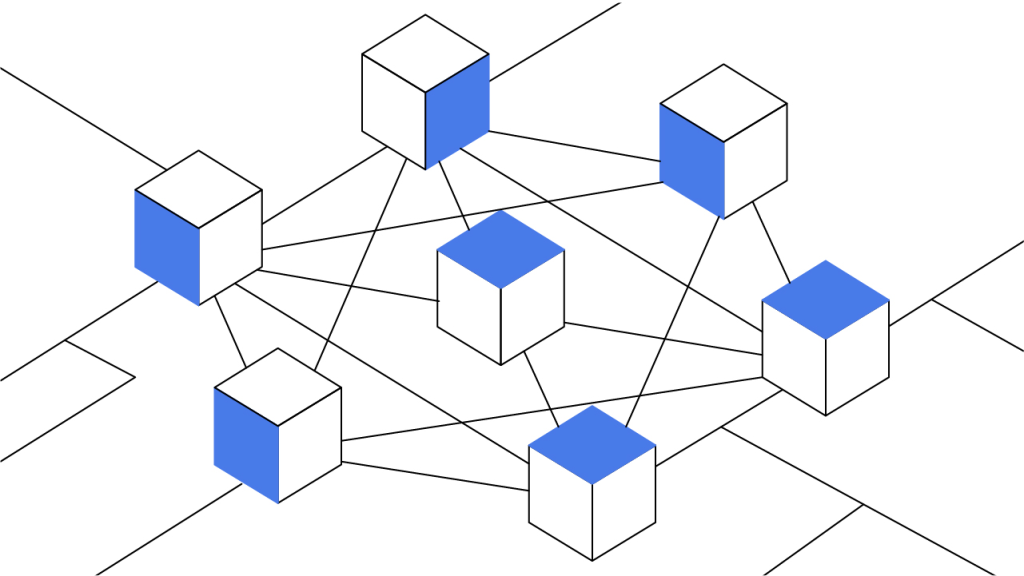Cross-Chain Interoperability: What it Means for Blockchain
Blockchain interoperability allows data and value to be transferred across different networks. It has become an increasingly important feature of Web3.
Updated December 21, 2021 • 3 min read

Summary
The concept of “blockchain interoperability” refers to the ability of different blockchain networks to exchange and leverage data between one another and to move unique types of digital assets between the networks’ respective blockchains. In an interoperable system, once disparate blockchain networks and assets can easily plug into and be combined with one another. This network interoperability may allow for the creation of powerful new products and services that leverage the benefits of multiple blockchain networks simultaneously.
Benefits of Blockchain Interoperability
While there already exist impressive and diverse blockchain ecosystems contained within individual networks like Ethereum, Polkadot, and Solana, the ability of such different networks to interact meaningfully with one another — referred to as interoperability — is expected to enable a wide range of blockchain-enabled products and services. More specifically:
Customizable Web3 services: The ability of blockchain protocols and applications to mix and match different “lego pieces” is key to creating entirely new Web3 instruments and platforms that aren’t possible with legacy industries and business models of the Web2 era. Many experts argue that interoperable smart contracts could supercharge industries like healthcare, law, or real estate, for instance by allowing important business information to be sent back and forth between private networks and public networks in a customizable and controllable manner. Blockchain interoperability may also eventually enable multi-token transactions and multi-token wallet systems, which would greatly streamline the crypto user experience.
A more decentralized ecosystem: While pure decentralization within individual blockchain networks is a top priority for many blockchain projects, the ability to establish network interoperability across multiple blockchains presents an even more advanced embodiment of blockchain technology’s promise to decentralize systems and economies. Instead of having one blockchain like Ethereum processing all the transactions for thousands of decentralized applications (dApps), there could one day be thousands of application-specific blockchains that communicate with one another through a decentralized main hub.
Enhanced cross-industry collaboration: Blockchain technology has a wide range of industry-specific use cases, but ultimately the primary benefits come down to data transparency and verifiability, smart contract execution, and decentralized consensus. Once blockchains used by different organizations and industries are able to interact with one another, independent markets and business applications that were previously considered entirely separate will be able to more easily transfer data and value. This means organizations and communities that wouldn’t typically interact with one another would be able to exchange information, leverage each other’s strengths, and cultivate innovation more effortlessly and effectively.
How Is Blockchain Interoperability Achieved?
Most existing Layer-1 blockchains lack built-in features that support cross-chain interoperability. However, there are a variety of tools today that are increasing the level of interoperability between blockchain networks:
Sidechains: A type of Layer-2 platform, sidechains are separate blockchain networks that are compatible with a single mainchain. Each sidechain has its own consensus mechanism, security parameters, and tokens. These sidechains generally have their own specific use cases that are distributed accordingly in order to improve the overall ecosystem’s processing efficiency and self-sovereignty. Several major crypto projects such as Polkadot and Cosmos were designed from the ground up to be comprehensive cross-chain infrastructure solutions, with the ultimate goal being to establish an interoperable “network of networks.”
Oracles: Within the context of blockchain technology, oracles bridge the information gap between on-chain and off-chain environments. Decentralized oracle services like Chainlink and API3 play a crucial role in feeding off-chain data to blockchain-enabled smart contracts and contribute to blockchain interoperability by ensuring that different ecosystems are referring to a common source of truth.
Bridges and swaps: Cross-chain bridges enable a digital asset owned by a party to be locked on one chain while an identical asset is “minted” on another chain and sent to an address owned by the original owner. In contrast, atomic swaps enable users to exchange tokens from different blockchain networks in a decentralized manner. Both are automatically enabled through the use of smart contracts and play a central role in facilitating seamless cross-chain value transfers.
Cryptopedia does not guarantee the reliability of the Site content and shall not be held liable for any errors, omissions, or inaccuracies. The opinions and views expressed in any Cryptopedia article are solely those of the author(s) and do not reflect the opinions of Gemini or its management. The information provided on the Site is for informational purposes only, and it does not constitute an endorsement of any of the products and services discussed or investment, financial, or trading advice. A qualified professional should be consulted prior to making financial decisions. Please visit our Cryptopedia Site Policy to learn more.

Is this article helpful?


